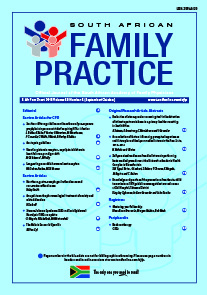An update on the pharmacological treatment of anxiety and related disorders
Keywords:
anxiety disorders, obsessive-compulsive disorder, post-traumatic stress disorder, anxiolytics
Abstract
The anxiety disorders, obsessive compulsive disorder (OCD) and post-traumatic stress disorder (PTSD) are common and debilitating, often coexist with medical and psychiatric conditions, and usually require long-term treatment. Effective anxiolytic drugs include the selective serotonin reuptake inhibitors (SSRIs) and the serotonin and noradrenaline reuptake inhibitors (SNRIs), which are the preferred agents in primary care. Patients who fail to respond adequately to these may benefit from second-line tricyclic antidepressants (TCAs) or monoamine oxidase inhibitors (MAOIs). Alternative antidepressants include agomelatine and mirtazapine. Benzodiazepines, the anti-epileptic agent, pregabalin, and atypical antipsychotics are generally reserved for specialist use. The 5-HT1A agonist, buspirone, and the antihistamine, hydroxyzine, may also be useful, although the evidence for their efficacy covers a very narrow spectrum. This review describes the pharmacology of these anxiolytics and provides updated evidence for their use in the anxiety and related disorders.
Section
Review Articles
By submitting manuscripts to SAFP, authors of original articles are assigning copyright to the South African Academy of Family Physicians. Copyright of review articles are assigned to the Publisher, Medpharm Publications (Pty) Ltd, unless otherwise specified. Authors may use their own work after publication without written permission, provided they acknowledge the original source. Individuals and academic institutions may freely copy and distribute articles published in SAFP for educational and research purposes without obtaining permission.

